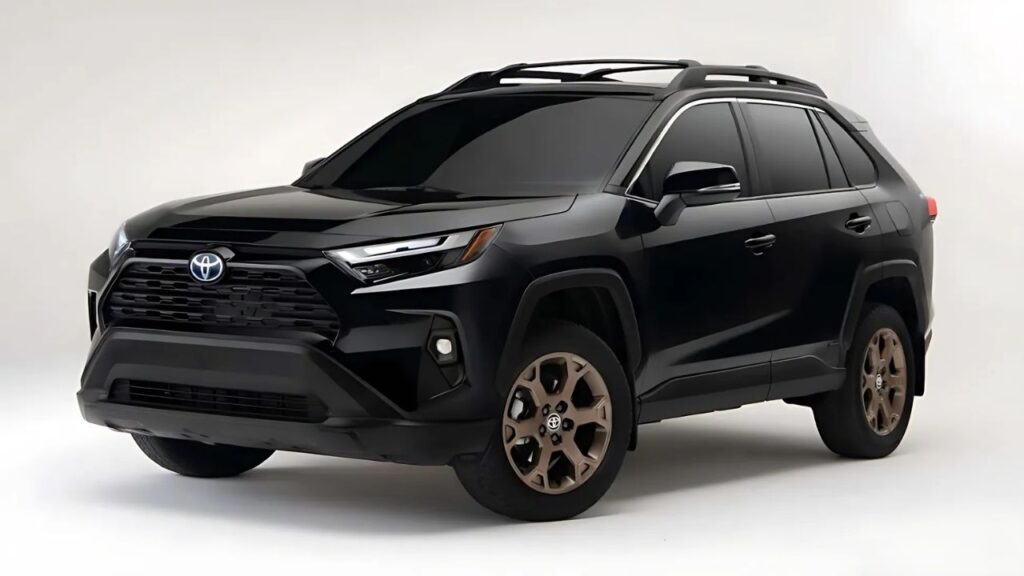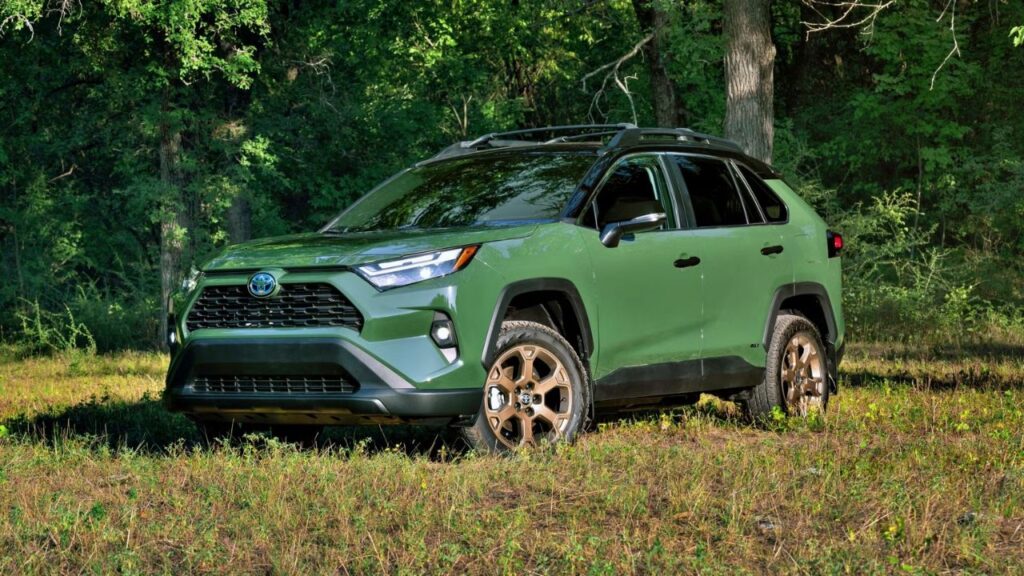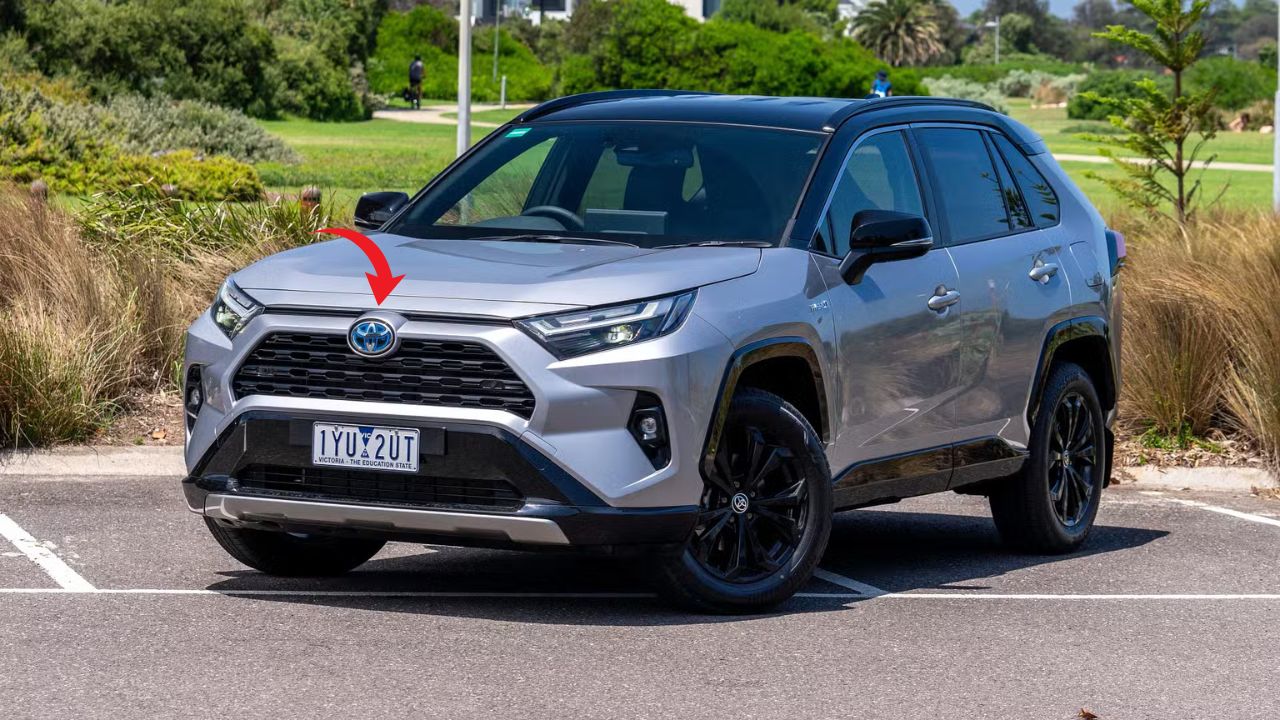Australian car buyers continue choosing larger, fuel-hungry vehicles despite increasing environmental awareness and rising petrol prices. SUVs and utes now represent over 70% of all new vehicle sales across the continent.
This trend challenges conventional wisdom about fuel efficiency priorities in vehicle selection. Consumer behavior suggests that practicality and lifestyle factors outweigh fuel economy considerations.

The SUV and Ute Sales Phenomenon
Sport Utility Vehicles have transformed from niche off-road vehicles to mainstream family transportation. Australian families increasingly view SUVs as essential rather than luxury purchases.
Utility vehicles have similarly evolved from pure work trucks to lifestyle statements. Modern utes combine commercial functionality with passenger car comfort and features.
Market Share Dominance
SUVs account for approximately 54% of all new vehicle registrations in Australia currently. This percentage continues growing despite fuel efficiency concerns and environmental messaging.
Utes represent another 18% of total sales making combined large vehicle sales dominant. Traditional passenger cars now occupy a minority position in the market.
Premium SUV segments show the strongest growth rates as consumers upgrade from economy models. Luxury SUV sales indicate price sensitivity is decreasing among target buyers.
Mid-size SUV categories experience the highest volume sales across all demographic groups. These vehicles balance size, capability, and affordability most effectively.
Brand Performance in Large Vehicle Segments
Toyota leads SUV sales with models ranging from compact RAV4 to full-size LandCruiser offerings. The Japanese brand’s reliability reputation particularly resonates with SUV buyers.
Ford dominates ute sales through the Ranger model’s commercial and lifestyle appeal. American engineering meets Australian practical requirements effectively in this segment.
Mazda’s CX series SUVs have gained substantial market share through attractive design and handling characteristics. The brand successfully positions SUVs as driver-focused vehicles.
Mitsubishi’s Triton and Outlander models serve budget conscious buyers seeking SUV capabilities. Value pricing attracts first-time SUV buyers from sedan backgrounds.
Understanding Consumer Motivations
Australian consumers cite safety as the primary reason for choosing larger vehicles over alternatives. Higher seating positions provide better visibility and crash protection benefits.
Towing capability represents another significant motivating factor for SUV and ute purchases. Boat, caravan, and trailer ownership drives demand for capable towing vehicles.
Family and Lifestyle Factors
Growing family sizes necessitate larger vehicles with additional seating and cargo capacity. Seven-seat SUVs address multi-child family transportation needs effectively.
Active lifestyle pursuits require vehicles capable of carrying recreational equipment safely and conveniently. Roof racks and cargo areas become essential features.
School pickup and drop-off logistics favor higher vehicles that provide better visibility. Parent safety concerns influence vehicle choice beyond personal preferences.
Multi-generational family activities require vehicles accommodating extended family groups for outings. Large SUVs enable family togetherness during recreational activities.
Work and Business Applications
Tradies and small business owners prefer utes for their dual personal and commercial utility. One vehicle serves multiple purposes reducing total ownership costs.
Corporate fleet managers increasingly specify SUVs for employee safety and image considerations. Professional image requirements influence business vehicle selection.
Regional and rural buyers need vehicles capable of handling unsealed roads and challenging conditions. Ground clearance and all-wheel-drive become practical necessities.
Real estate agents and sales professionals use SUVs for client transportation and professional image. Vehicle choice affects business success in relationship-driven industries.
Fuel Consumption Realities and Consumer Responses
Modern SUVs consume significantly more fuel than equivalent passenger cars despite engineering improvements. Average fuel consumption remains 20-30% higher than sedan alternatives.
Consumers appear willing to accept higher fuel costs in exchange for perceived benefits. Monthly fuel budget increases are viewed as acceptable trade-offs.
Cost-Benefit Analysis from Consumer Perspective
Buyers rationalize higher fuel costs against increased safety, utility, and comfort benefits received. Total cost of ownership includes more than fuel expenses alone.
Insurance costs for SUVs often exceed passenger car premiums but buyers accept these increases. Comprehensive vehicle costs include financing, insurance, maintenance, and fuel.
Resale values for popular SUV models remain strong offsetting higher operational costs partially. Future value retention justifies current expenditure in buyer minds.
Elimination of second vehicle needs through SUV versatility can reduce total household transportation costs. One capable vehicle replaces multiple specialized alternatives.
Fuel Efficiency Improvements in Large Vehicles
Manufacturers continue improving SUV and ute fuel efficiency through advanced engine technologies. Turbocharging and direct injection reduce consumption without sacrificing performance.
Hybrid SUV options are gaining acceptance among environmentally conscious buyers seeking size without guilt. These models bridge traditional and electric vehicle technologies.
Diesel engines remain popular in commercial utes providing superior fuel efficiency for heavy-duty applications. Torque characteristics suit towing and hauling requirements perfectly.
Lightweight materials and aerodynamic improvements reduce fuel consumption while maintaining structural strength. Engineering advances partially offset size disadvantages.
Environmental Impact and Consumer Awareness
Environmental groups criticize SUV sales growth for increasing Australia’s transport emissions substantially. Large vehicle popularity conflicts with climate change objectives directly.
Consumer environmental awareness appears disconnected from vehicle purchasing behavior patterns observed. Knowledge doesn’t translate into action when practical needs dominate.
Emission Levels and Climate Impact
SUVs and utes produce approximately 25% more CO2 emissions than equivalent passenger cars. This difference compounds across millions of vehicles annually.
Australia’s transport sector emissions continue rising despite electric vehicle promotion and climate awareness campaigns. Large vehicle sales growth counteracts efficiency improvements.
Urban air quality suffers from increased large vehicle usage particularly during peak traffic periods. Particulate emissions affect city environments disproportionately.
Lifecycle emissions including manufacturing impact exceed operational emissions for all vehicle types. Larger vehicles require more materials and energy to produce.
Consumer Environmental Attitudes
Surveys indicate strong environmental concern among Australian consumers across demographic groups. However, stated preferences don’t align with purchasing behavior consistently.
Buyers express intention to consider fuel efficiency in future purchases while choosing inefficient vehicles currently. Behavioral intention and action remain disconnected.
Environmental messaging effectiveness appears limited when competing against practical vehicle requirements. Emotional and practical appeals outweigh rational environmental arguments.
Guilt about environmental impact exists but doesn’t prevent large vehicle purchases among surveyed buyers. Cognitive dissonance allows continued behavior despite awareness.
Economic Factors Influencing Large Vehicle Preference
Low interest rates have made larger, more expensive vehicles more affordable through financing. Monthly payment calculations favor higher-priced vehicles when rates are favorable.
Government tax policies inadvertently favor larger vehicles through depreciation allowances and business deductions. Tax advantages offset higher purchase prices for business buyers.
Financing and Affordability Considerations
Extended loan terms reduce monthly payments making SUVs accessible to broader buyer groups. Seven-year financing has become common for larger vehicle purchases.
Manufacturer financing incentives often favor larger models with higher profit margins inherently. Zero percent financing deals appear more frequently on SUVs than passenger cars.
Trade-in equity from previous vehicles enables upgrades to larger models without significant cash requirements. Strong used car values facilitate vehicle supersizing trends.
Lease programs make premium SUVs accessible to buyers unable to purchase outright. Lower monthly lease payments hide true vehicle costs effectively.
Insurance and Ownership Cost Factors
Comprehensive insurance costs for SUVs reflect higher replacement values and repair costs. However, safety ratings can partially offset premium increases.
Maintenance costs vary significantly between SUV models and manufacturers affecting total ownership calculations. Reliability reputation influences long-term cost projections.
Tire replacement costs increase substantially for larger vehicles with low-profile wheel combinations. Performance tire options add significant ongoing expenses.
Depreciation rates for popular SUV models remain favorable compared to declining passenger car values. Market preference protects SUV resale values effectively.
Regional Variations in Large Vehicle Adoption
Rural and regional areas show higher SUV and ute adoption rates reflecting practical transportation needs. Unsealed roads and distance requirements favor capable vehicles.
Metropolitan areas increasingly embrace SUVs despite urban driving conditions that don’t require large vehicle capabilities. City buyers choose SUVs for reasons beyond practical necessity.
Urban vs Rural Usage Patterns
City SUV owners rarely utilize off-road capabilities but value elevated driving position and cargo space. Urban applications focus on convenience rather than capability.
Regional buyers genuinely need vehicle capabilities for work, recreation, and travel requirements. Practical applications justify large vehicle choice in country areas.
Towing requirements vary dramatically between urban and rural buyers with country applications being more demanding. Boat and caravan ownership concentrates in regional areas.
School runs and suburban logistics drive urban SUV adoption despite available public transport alternatives. Convenience outweighs efficiency in urban decision-making.
Climate and Geographic Influences
Northern Australia’s tropical climate favors air-conditioned SUVs with superior cooling systems. Larger vehicles provide better cabin climate control.
Mountain and coastal regions require vehicles capable of steep terrain and beach access. Geographic challenges influence practical vehicle requirements significantly.
Flood-prone areas prefer higher ground clearance for emergency evacuation and normal transportation. Climate change increases extreme weather vehicle requirements.
Desert and remote area travel demands reliable vehicles with extended range capabilities. Breakdown consequences are severe in isolated regions.
Technology Integration in Large Vehicles
Modern SUVs offer advanced technology features rivaling luxury passenger cars in sophistication. Infotainment systems, safety features, and connectivity match buyer expectations.
Utes increasingly incorporate passenger car comfort and technology features while maintaining commercial capability. Work vehicles now provide lifestyle amenities.
Safety Technology Adoption
Advanced driver assistance systems appear standard in most new SUVs and premium utes. Autonomous emergency braking, lane keeping, and adaptive cruise control are common.
Blind spot monitoring becomes particularly valuable in larger vehicles with reduced visibility. Technology compensates for SUV design limitations effectively.
Parking assistance systems help drivers manage larger vehicles in tight urban spaces. Automated parking reduces stress and potential damage risks.
Trailer sway control and towing assistance systems make large vehicle towing safer for inexperienced operators. Technology enables broader capability utilization.
Connectivity and Infotainment Features
Smartphone integration through Apple CarPlay and Android Auto meets modern buyer expectations universally. These features are standard rather than optional.
Premium audio systems in SUVs often exceed passenger car offerings reflecting buyer expectations. Large cabins accommodate sophisticated sound systems effectively.
Navigation systems integrate real-time traffic and weather information affecting route planning decisions. Technology reduces travel stress and improves efficiency.
Wi-Fi hotspot capabilities enable passenger connectivity during family travel particularly on long journeys. Technology enhances vehicle utility for modern families.
Market Competition and Product Development
Intense competition among manufacturers drives continuous SUV and ute model improvements and additions. New models appear regularly targeting specific buyer segments.
Product development cycles accelerate as manufacturers respond to changing consumer preferences rapidly. Market success requires constant innovation and feature updates.
New Model Introductions and Updates
Manufacturers launch new SUV variants annually targeting specific market niches and price points. Product proliferation provides options for diverse buyer requirements.
Ute model updates focus on comfort and technology improvements while maintaining commercial capability. Lifestyle applications drive passenger car feature adoption.
Hybrid and electric SUV introductions begin addressing environmental concerns while maintaining size preferences. Electrification enables guilt-free large vehicle ownership.
Performance variants of SUVs attract enthusiast buyers seeking sporty characteristics in practical packages. High-performance SUVs create new market segments.
Feature Competition and Innovation
Cargo space optimization becomes a key differentiator among similar-sized SUV models. Clever storage solutions attract practical buyers comparing alternatives.
Ride quality improvements make SUVs more acceptable for daily commuting and family use. Comfort features compete directly with passenger car alternatives.
All-wheel-drive system sophistication varies significantly between models affecting capability and fuel consumption. Technology advancement benefits both performance and efficiency.
Warranty and service programs compete for buyer attention as vehicles become increasingly reliable. After-sales support differentiates otherwise similar products.
Future Outlook for Large Vehicle Dominance

Industry analysts predict continued SUV and ute market dominance despite environmental pressures and fuel cost concerns. Consumer preferences appear firmly established.
Electric vehicle adoption may eventually address environmental concerns while maintaining large vehicle benefits. Electrification could perpetuate rather than reverse sizing trends.
Electrification Impact on Large Vehicles
Electric SUVs eliminate fuel consumption concerns while maintaining size and capability benefits. Tesla Model X demonstrates electric SUV viability.
Battery technology improvements will enable electric utes suitable for commercial applications eventually. Weight and range limitations currently restrict electric ute adoption.
Charging infrastructure development will determine electric large vehicle adoption rates across regional Australia. Urban areas will lead electric SUV adoption.
Cost reductions in electric vehicle technology will make electric SUVs price-competitive with conventional alternatives. Mass adoption requires price parity.
Regulatory and Policy Influences
Emission standards implementation may favor electric large vehicles over conventional alternatives ultimately. Regulation could accelerate rather than reverse large vehicle trends.
Urban congestion charges might discourage large vehicle city use if implemented widely. Policy tools could influence vehicle choice through economic incentives.
Parking restrictions targeting large vehicles could limit urban SUV appeal in dense areas. Space constraints may eventually discourage oversized vehicles.
Fuel taxation policies could affect large vehicle economics but haven’t deterred buyers historically. Price sensitivity appears limited among SUV buyers.
Fuel-hungry SUVs and utes dominate Australian car sales despite contradicting environmental awareness and fuel cost concerns. Consumer preferences prioritize practicality, safety, and lifestyle factors over efficiency considerations.
This trend reflects deeper changes in Australian society including family structures, work patterns, and recreational activities. Large vehicles address real transportation needs despite environmental costs.
Future market evolution will likely see continued large vehicle preference combined with electrification technology. Environmental concerns may be addressed through technology rather than downsizing.
The challenge for policymakers involves balancing consumer choice with environmental objectives through appropriate incentives and regulations. Market forces alone appear insufficient to change consumer behavior significantly.
FAQs
Q: Why do Australians prefer fuel-hungry SUVs despite high fuel costs?
Safety, family needs, towing capability, and lifestyle factors outweigh fuel cost concerns for most buyers choosing SUVs.
Q: Are manufacturers improving fuel efficiency in large vehicles?
Yes, through turbocharging, hybrid systems, and lightweight materials, though SUVs still consume more fuel than passenger cars.
Q: Will electric vehicles solve the environmental impact of large vehicle preference?
Electric SUVs and utes could address emissions concerns while maintaining size benefits, potentially perpetuating large vehicle trends.
Also Read: Ineos Grenadier 4×4 Lands in Australia, Rivals LandCruiser 70

